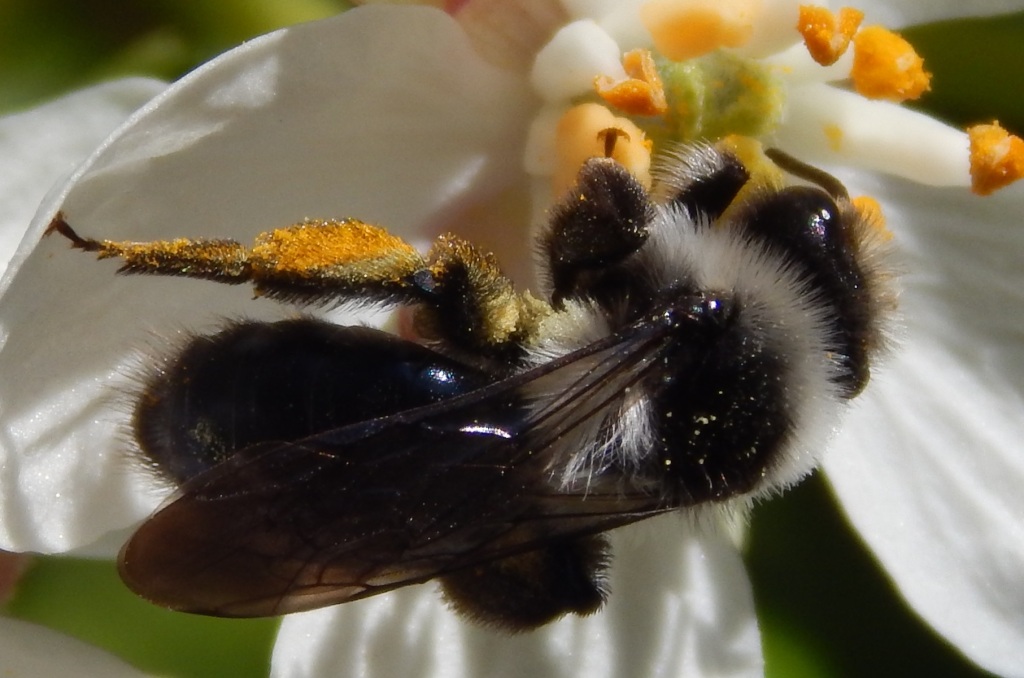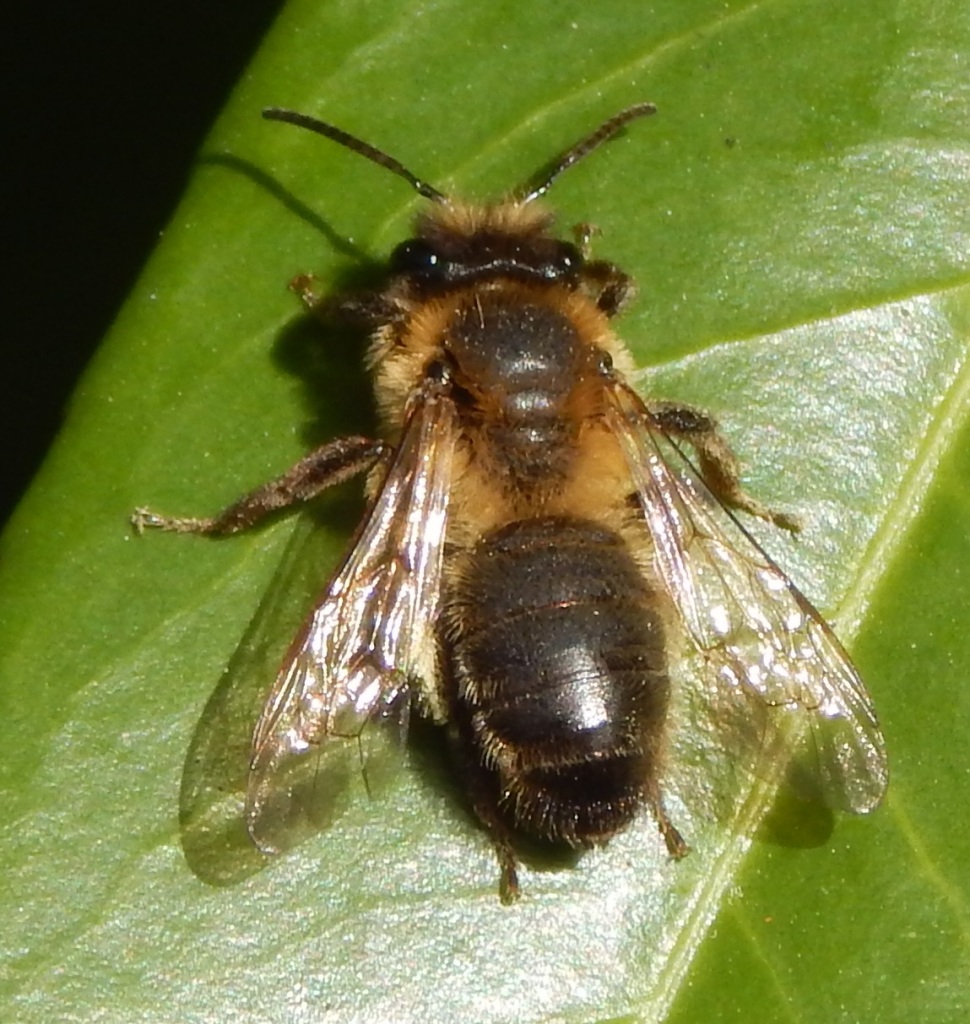
[024] Andrena cineraria, Ashy Mining Bee
Introduction
Andrena Cineraria, the Ashy Mining Bee is a dark bee with silver-grey markings that makes holes in the ground as nests for its young. It is sometimes called a Grey Mining Bee.
I will also consider a few of the other 1300 species of Andrena, the Mining Bees, or at least the seventy that are seen in Britain.
Taxonomy
Kingdom – Animals
Phylum – Arthropods
Class – Insects
Order – Hymenoptera (Bees, Wasps and Ants and others)
Clade – Anthophila (Bees)
Family – Andrenidae (Mining Bees, mostly Andrena)
Genus – Andrena (Mining Bees)
Scientific Name – Andrena cineraria and others
Name
You can read below why they are called mining bees.
Andrena comes via Latin from an Ancient Greek word meaning wasp. A cinerarium is a place for holding the ashes of the deceased.
Bees
I won’t go into the complex taxonomy of Hymenoptera but you come down to Anthophila, the small group of families that make up bees, at a level between family and superfamily. It’s a grouping that is strictly within groups that define wasps – so technically bees are specialized wasps.
There are 16 000 species of bees in seven families.
Until a few years ago I used to think that we had two different types of bee in Britain – proper bees and bumble bees. Well, we do have one species of Honey Bee. And there are actually a few species of Bumble Bee. But we also have over two hundred and fifty other species of bees, mostly smaller than Honey Bees and some very much smaller. The best way to find them is to look inside open flowers in summer. They are solitary bees and don’t have queens and the social structure that we associate with bees in hives.
About a quarter of the British species are Andrena.
Andrena
I won’t go into the anatomy of bees or the distinctions between different families and genera, which may depend on checking the segments of the antennae or the hairs on the legs.
Andrena species look pretty much like bees apart from their colouring and they are only a little smaller than honey bees. It’s their lifestyle that makes them mining bees. Like all bees they are holometabolous, going through a complete metamorphosis. After hibernating, when it gets warm enough, the adults emerge from the pupal state and they mate.
That’s it for the male, which dies shortly afterwards, but the female has to find somewhere to lay her eggs. She gathers pollen and nectar from flowers in the same way as honey bees. Then she looks for some sandy soils to dig a hole for a burrow. She makes small cells containing a ball of pollen mixed with nectar on to which she lays an egg. The hole is sealed and the larva emerging from an egg has something to feed on.
Description
Andrena cineraria is the most easily recognizable species of Andrena. The female is black with two bands of grey hairs on her thorax. The male’s thorax is completely covered in grey hairs and he also has a tuft of hairs on his face. These grey hairs give the bees their ‘ashy’ name.
You can sort out the males and females in the following pictures.






Habitat
Andrena cineraria are common and widespread in the UK and over most of Europe. They fly from April to June and they are important pollinators for many fruit trees.
They nest in lawns, gardens, parkland and agricultural borders.
Other Notes
They have been one of the visitors to my garden collecting pollen – together with other Andrena species shown below.
In nature reserves I have seen sections of footpath where hundreds of bees were mining a section of dozens of yards. Somewhere towards the end of August there will be a post about one of the hazards of gregarious mining.
See also
These are some of the other Mining Bees I have seen – Gwynne’s Mining Bee, Andrena bicolor; Hawthorn Mining Bee, Andrena Chrysosceles; Orange-tailed Mining Bee, Andrena Haemorrhoa and Chocolate Mining Bee, Andrena Scotica – two pictures of each.








You will see [029] the Honey Bee and [052] Bumble Bees, both coming soon.
Feel free to look out for the other two hundred British species.

Pingback: [237] Nomada Species, Nomad Bees | The Species of Britain
Pingback: [288] Pyrochroa serraticornis, Cardinal Beetle and other Beetles | The Species of Britain